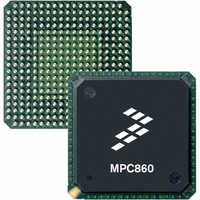MC68360VR25VL Freescale Semiconductor, MC68360VR25VL Datasheet - Page 786

MC68360VR25VL
Manufacturer Part Number
MC68360VR25VL
Description
IC MPU QUICC 25MHZ 357-PBGA
Manufacturer
Freescale Semiconductor
Datasheets
1.MC68EN360VR25L.pdf
(14 pages)
2.MC68EN360VR25L.pdf
(2 pages)
3.MC68360AI25L.pdf
(962 pages)
Specifications of MC68360VR25VL
Processor Type
M683xx 32-Bit
Speed
25MHz
Voltage
3.3V
Mounting Type
Surface Mount
Package / Case
357-PBGA
Family Name
M68000
Device Core
ColdFire
Device Core Size
32b
Frequency (max)
25MHz
Instruction Set Architecture
RISC
Operating Supply Voltage (max)
3.3V
Operating Supply Voltage (min)
2.7V
Operating Temp Range
0C to 70C
Operating Temperature Classification
Commercial
Mounting
Surface Mount
Pin Count
357
Package Type
BGA
Lead Free Status / RoHS Status
Lead free / RoHS Compliant
Features
-
Lead Free Status / Rohs Status
Compliant
Available stocks
Company
Part Number
Manufacturer
Quantity
Price
Company:
Part Number:
MC68360VR25VL
Manufacturer:
Exar
Quantity:
160
Company:
Part Number:
MC68360VR25VL
Manufacturer:
Freescale Semiconductor
Quantity:
10 000
Company:
Part Number:
MC68360VR25VLR2
Manufacturer:
Freescale Semiconductor
Quantity:
10 000
- Current page: 786 of 962
- Download datasheet (4Mb)
Applications
9.6.7.2 CONFIGURING THE MEMORY CONTROLLER. The
describe configuring the memory controller.
For information on configuring the global memory register (GMR), refer to 9.1 Minimum Sys-
tem Configuration.
The memory controller status register (MSTAT) is used for reporting parity errors and does
not require initialization.
Eight base registers (BRs) exist, one for each memory bank. BR6 and BR7 for CS6 and CS7
will be specified with the 53C90 address being $04001000. Please refer to 9.1 Minimum
System Configuration for DRAM and other memory configurations.
Eight option registers (ORs) exist, one for each memory bank. The following information is
valid for registers OR6 and OR7:
Therefore, OR7 = $2FFFF804 and OR6 = $1FFFF804.
9.7 USING THE QUICC AS A TAP CONTROLLER FOR BOARD SELF-TEST
An assembled board is often tested with complex test equipment using a unique test port or
a bed-of-nails fixture. This procedure becomes more difficult as device packages and fea-
tures become smaller. The objective of the JTAG standard is to define a boundary scan
architecture that can be adopted as a part of an integrated circuit to perform both an in-circuit
test and a verification of the interconnection between different devices.
The JTAG standard defines test logic that can be integrated into a device to perform:
9-66
BR7 = $0400104D. Address decoded is $04001xxx, function codes are xxxx (don't care,
will be masked in OR7), TRLXQ and CSNTQ are set, parity is enabled, read and write ac-
cesses are allowed, and this base register is valid.
BR6 = $04001805. Same as BR7, except TRLXQ and CSNTQ are not set and the next
consecutive 2K memory block is selected.
DSSEL should be 0.
SPS1–SPS0 should be 10 (indicating port size is 8 bits).
PGME should be 0 since this is not DRAM.
BCYC1–BCYC0 are not used and should be cleared.
FCM3–FCM0 may be cleared to zeros to allow the chip select or RAS line to assert on all
function codes, except CPU space (interrupt acknowledge). It is advisable to program
FCM3–FCM0 to zeros, at least during the initial stages of debugging.
The AM27–AM11 bits will mask the address if they are cleared. In this application, they
are all set to allow decoding.
The TCYC bits should be set to determine the number of wait states required—one wait
state on CS7 (0010) and no wait states on CS6 (0001).
1. Testing of the interconnection between devices once they have been mounted on a
printed circuit board or any other substrate.
Freescale Semiconductor, Inc.
For More Information On This Product,
MC68360 USER’S MANUAL
Go to: www.freescale.com
following
paragraphs
Related parts for MC68360VR25VL
Image
Part Number
Description
Manufacturer
Datasheet
Request
R
Part Number:
Description:
Manufacturer:
Freescale Semiconductor, Inc
Datasheet:

Part Number:
Description:
MC68360 MC68360 Multiple Ethernet Channels on the QUICC
Manufacturer:
Motorola / Freescale Semiconductor

Part Number:
Description:
MC68360 Implementing an 8 bit Eprom for an MC68EC040-MC68360 System
Manufacturer:
Motorola / Freescale Semiconductor

Part Number:
Description:
MC68360 Interfacing the MC68060 to the MC68360
Manufacturer:
Motorola / Freescale Semiconductor

Part Number:
Description:
MC68360 MC68360 RAM Microcode Package Option Overview
Manufacturer:
Motorola / Freescale Semiconductor

Part Number:
Description:
MC68360 MC68360 CPM-CPU Interaction
Manufacturer:
Motorola / Freescale Semiconductor

Part Number:
Description:
MC68360 Interfacing SDRAM to the MC68360 QUICC Device
Manufacturer:
Motorola / Freescale Semiconductor

Part Number:
Description:
MC68360 Interfacing the QUICC to a MCM516400 (4Mx4 10-12 column-row) DRAM
Manufacturer:
Motorola / Freescale Semiconductor

Part Number:
Description:
MC68360 Interfacing the 68360 (QUICC) to T1-E1 Systems
Manufacturer:
Motorola / Freescale Semiconductor

Part Number:
Description:
MC68360 Multiple QUICC Design Concept
Manufacturer:
Motorola / Freescale Semiconductor
Part Number:
Description:
Manufacturer:
Freescale Semiconductor, Inc
Datasheet:
Part Number:
Description:
Manufacturer:
Freescale Semiconductor, Inc
Datasheet:
Part Number:
Description:
Manufacturer:
Freescale Semiconductor, Inc
Datasheet:
Part Number:
Description:
Manufacturer:
Freescale Semiconductor, Inc
Datasheet:
Part Number:
Description:
Manufacturer:
Freescale Semiconductor, Inc
Datasheet:











